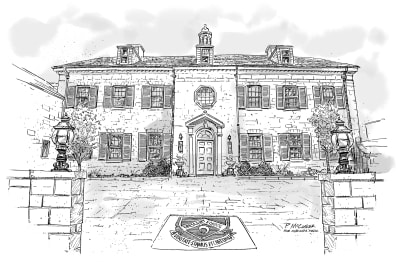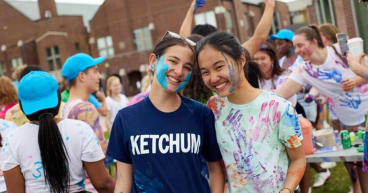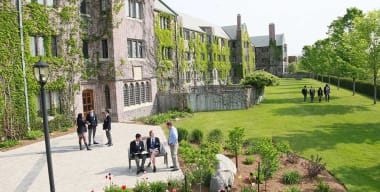Included is innovation around what boys' schools can, and should, provide to the students that enroll within them. Taylor Statton, head of character development at Pickering College, in Newmarket, wrote in 1930 that:
"The ‘habit of obedience’ forced upon the impressionable nature of a child does not develop judgment and will, but does develop that fatal facility in following other people’s wills, which tends to make us a hopeless mob—mere sheep, instead of wise, free, strong individuals. The habit of submission to authority, the long, deeply impressed conviction that to ‘be good’ is to ‘give up’—that there is virtue in the act of surrender—this is one of the sources from which we continually replenish human weakness … Those who know no other way of modifying a child’s behaviour than through ‘making him mind’ suppose that if he were not make to mind he must be utterly neglected. … the rich years of childhood should be passed in the acquiring the habits of self-direction."
Today, that’s exactly what boys’ schools hold as a primary goal: the development of character based in a uniquely male perspective. Just as some girls’ may require more encouragement to enter STEM studies, given the traditional gender expectations that are still reflected in academic and professional life, some boys benefit from a greater attention to the development of character and social identity. Through specific attention to aspects of their students’ emotional lives, as well as positive mentorship, boys’ schools seek to help students move beyond the stereotypical expectations that may be made of them in other environments. In contrast to what was common in the early part of the last century, boys schools have adopted many of the goals that arose within the girls’ schools. Paraphrasing Deryn Lavell in her description of Bishop Strachan School, they seek to provide an opportunity for each boy to understand who he is, his place in the world, to gain independence, to have a chance to learn leadership skills, [and] "to find a voice in a multiplicity of voices."
An environment of possibility
Absent from girls, boys perceive new areas of opportunity, such as in the arts, or other areas of student engagement that, in coed schools, can unwittingly encourage gender segregation and performance expectations. In all-boys schools, students are more likely to engage in the arts and the social sciences, and feel less pressure to adopt/display stereotypically male behaviors.
Most importantly, boys’ schools can allow specific kinds of discussion that, in other settings, boys may not be readily exposed to or, when they are, may feel an acute pressure to avoid. In addition to teaching English and Drama, Laurie Fraser administers aspects of the Character Project at Upper Canada College. The goal of the project is partially to instill authority and leadership, though there are more foundational goals as well. “It’s really hard to act in the world with kindness and generosity when you don’t feel good on the inside,” says Fraser. “We have conversations in a series of workshops about character strengths and the pillars of well-being, including positive emotions, engagement, relationships, finding meaning and having a sense of accomplishment in life.”
On this page, find a list of all-boys schools in Ontario.
Frequently Asked Questions
How many Ontario boys' schools are there?
There are 10 Ontario boys' schools that are Our Kids trusted members.
How much is tuition at Ontario boys' schools?
Tuition fees for Ontario boys' schools range from $8,500 to $77,070 per year with an average tuition of $39,457 per year.
What’s the largest school?
Of the Ontario boys' schools, the largest is Upper Canada College with 1220 students in Grades SK to 12.
Are Ontario boys' schools good?
We interviewed both parents and students. You can read reviews about Ontario boys' schools on this page.
Is there a private school expo where I can meet with Ontario boys' schools?
Yes. You can meet with private schools and education experts at the Our Kids Private School Expos held every year in September and October. These events are designed for both parents and students. Find event details and ticket info here.











